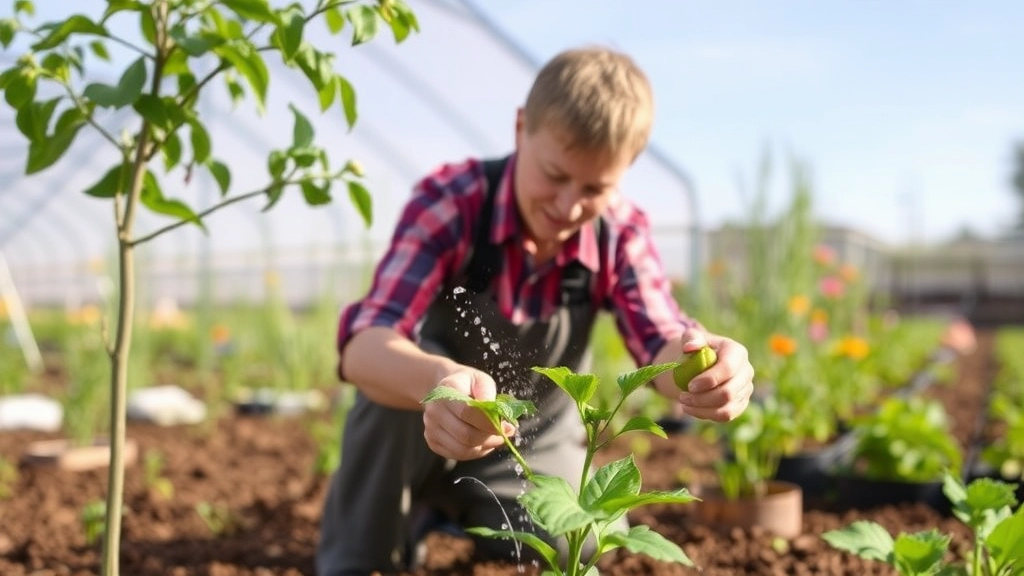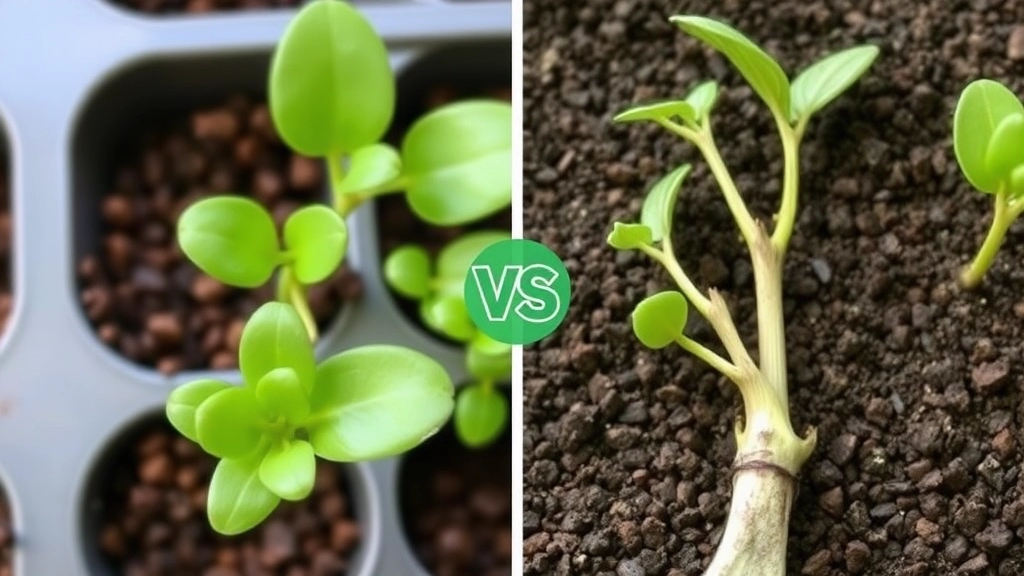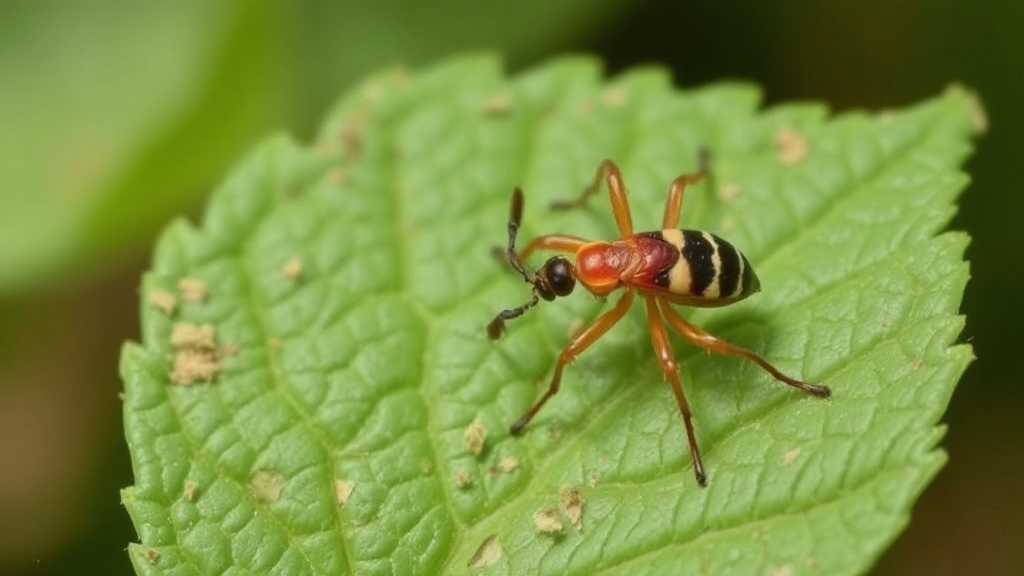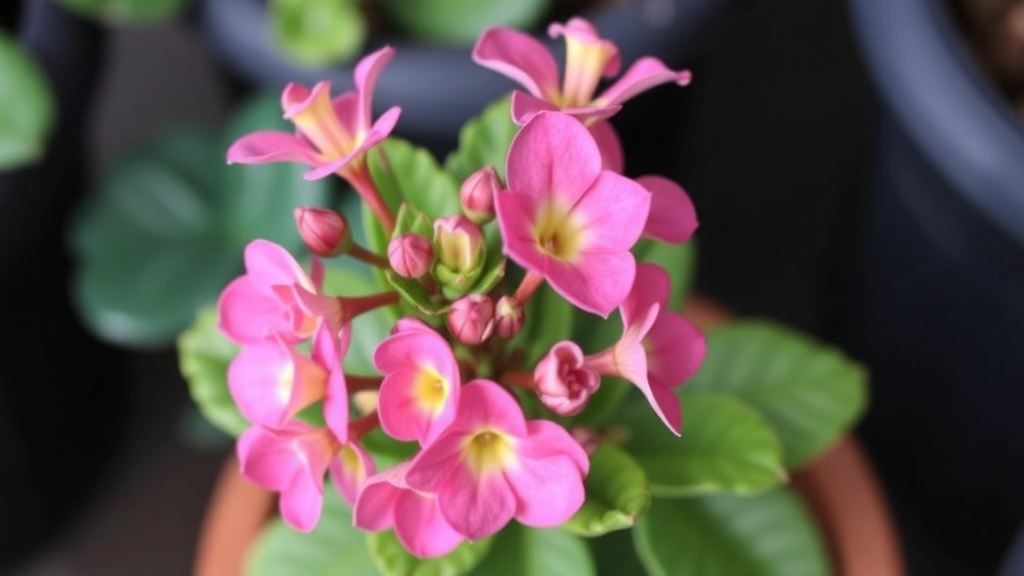Growing a Kalanchoe Pink Plant
Introduction
Growing a Kalanchoe Pink Plant, especially the stunning “Pink Butterflies” variety, is a rewarding experience for any plant enthusiast. This succulent is not only eye-catching but also relatively easy to care for if you know the right techniques. Let’s dive into the essentials of watering, light requirements, and propagation methods to keep your Kalanchoe thriving.
Care Tips
Light Requirements
First, ensure your Kalanchoe Pink Plant gets plenty of indirect sunlight to maintain its vibrant colour.
Watering
Watering should be done sparingly, allowing the soil to dry out between waterings to prevent root rot.
Propagation Methods
For propagation, you can either use the tiny pink plantlets or stem cuttings, both of which are effective methods.
By following these tips, you’ll enjoy a healthy and beautiful Kalanchoe Pink Plant for years to come.
Optimal Growing Conditions for Kalanchoe Pink Butterflies
Are you struggling to keep your Kalanchoe Pink Butterflies thriving?
Understanding the optimal growing conditions is crucial for ensuring your plant flourishes.
Kalanchoe Pink Butterflies thrive best in specific environments that mimic their native habitat.
Key Growing Conditions:
- Temperature: Ideal temperatures range from 18°C to 24°C.
- Humidity: Moderate humidity levels are preferred, around 40-60%.
- Air Circulation: Good airflow is essential to prevent fungal diseases.
- Light: Bright, indirect sunlight is optimal. Too much direct sunlight can scorch the leaves.
To create the perfect environment, consider the following tips:
- Location: Place your Kalanchoe near a window that receives filtered light. Avoid direct sunlight during peak hours.
- Container: Use pots with drainage holes to prevent waterlogging.
By ensuring these conditions, your Kalanchoe will not only survive but thrive, showcasing its vibrant blooms.
Next, let’s delve into how to manage your watering schedule effectively to keep your plant healthy.
Watering Schedule and Techniques

So, you’ve got your Kalanchoe Pink Butterflies all set up, but now comes the big question: how often should you water them?
Finding the Right Balance
Overwatering is a common pitfall for many plant parents. These beauties thrive in well-draining soil and prefer to dry out between waterings. Here’s how to nail it:
- Check the Soil: Stick your finger about an inch into the soil. If it feels dry, it’s time to water. If it’s still moist, hold off for a bit.
- Watering Frequency: Generally, during the growing season (spring and summer), you might water every 1-2 weeks. In the dormant months (fall and winter), scale back to once every 2-4 weeks.
Watering Techniques
Now, let’s talk about how to give them a drink:
- Water Deeply: When you do water, make sure to soak the soil thoroughly until it drains out the bottom. This encourages deep root growth.
- Use Room Temperature Water: Cold water can shock the roots. Aim for something a little warmer.
- Avoid the Leaves: Try to water at the base of the plant to prevent leaf rot. Kalanchoes aren’t fans of sitting in water.
Signs of Trouble
Keep an eye out for signs that you’re not quite hitting the mark:
- Yellow Leaves: This could mean you’re overwatering.
- Shriveled Leaves: If the leaves look a bit sad, it might be time to step up your watering game.
Light and Temperature Requirements
Understanding the light and temperature needs of Kalanchoe Pink Butterflies is crucial for their healthy growth.
What light do Kalanchoe Pink Butterflies need?
These vibrant succulents thrive in bright, indirect sunlight.
Key points to remember:
- Direct sunlight can scorch their leaves, so a spot with filtered light is ideal.
- Too little light can lead to leggy growth and fewer blooms. For more detailed care tips, check out our lighting and care tips.
- Aim for 6 hours of light daily for optimal health.
Temperature considerations:
Kalanchoe Pink Butterflies prefer a warm environment.
Ideal temperature range:
- Daytime: 20-25°C (68-77°F)
- Nighttime: 10-15°C (50-59°F)
Tips for managing temperature:
- Avoid placing them near cold drafts or heating vents.
- If you live in a cooler climate, consider moving them indoors during winter. Learn more about ideal temperature conditions for your Kalanchoe.
Propagation Methods: Plantlets vs. Stem Cuttings

When it comes to expanding your Kalanchoe Pink Butterflies collection, understanding the right propagation methods can make all the difference. Many enthusiasts often wonder whether to use plantlets or stem cuttings for propagation. Let’s break down both methods to help you decide which suits your needs best.
Plantlets
Plantlets, or offsets, are small clones that grow around the base of the parent plant. They are a fantastic option for propagation because:
- Ease of Removal: Simply twist or cut the plantlet from the base.
- Established Roots: They often have small roots already, making them easier to transplant.
- Quick Growth: Plantlets usually establish quickly in their new environment.
To propagate using plantlets:
- Select Healthy Offsets: Choose those that are at least a few inches tall.
- Use Clean Tools: Ensure your cutting tool is sterilised to prevent disease.
- Allow to Callous: Let the cut end dry out for a day before planting to reduce the risk of rot.
Stem Cuttings
Stem cuttings are another popular method for propagating Kalanchoe Pink Butterflies. This approach can be particularly rewarding, especially if you want to control the number of new plants. Here’s why:
- Versatility: You can take cuttings from any healthy part of the stem.
- Potential for Larger Plants: A larger cutting can produce a more substantial plant.
- Propagation Timing: You can do this throughout the growing season.
To propagate using stem cuttings:
- Choose a Healthy Stem: Look for a stem that is firm and free from disease.
- Cut at the Right Angle: Make a clean cut just below a leaf node.
- Let it Callous: Similar to plantlets, allow the cut end to dry for a day.
- Plant in Soil: Insert the cutting into well-draining soil and water lightly.
Choosing the Right Soil for Kalanchoe Succulents
As we delve deeper into the care of Kalanchoe Pink Butterflies, the importance of selecting the right soil cannot be overstated.
What type of soil is best for these succulents?
Kalanchoe plants thrive in well-draining soil that mimics their natural habitat. Here are some key points to consider:
- Drainage is Crucial: Succulents like Kalanchoe are prone to root rot if their roots sit in water. Look for soil that allows excess moisture to escape quickly.
- Cactus Mix: A pre-packaged cactus or succulent mix is often ideal. These mixes are specifically formulated for plants that require excellent drainage.
- DIY Soil Mix: If you prefer a homemade blend, consider combining:
- 50% potting soil
- 25% coarse sand
- 25% perlite or pumice
- pH Level: Kalanchoe prefers slightly acidic to neutral soil (pH 6.0 to 7.0). Regularly check the pH to ensure optimal growth.
- Nutrients: While Kalanchoe doesn’t need overly rich soil, adding a slow-release fertiliser can support healthy growth.
Using the right soil not only promotes healthy roots but also encourages vibrant blooms. For more detailed care tips, you might find our Ultimate Guide to Growing and Caring for Succulent Plant Kalanchoe helpful. Additionally, if you’re interested in specific varieties, check out our Types of Kalanchoe Tomentosa Varieties and Care Tips.
Common Pests and How to Control Them

Have you ever noticed tiny critters on your Kalanchoe Pink Butterflies? It can be a real headache, right?
Let’s dive into the common pests that can invade your beloved succulent and how to tackle them effectively.
Common Pests
- Mealybugs
- What they are: Tiny white cottony blobs on leaves.
- How to spot them: They love to hide in leaf joints and can lead to wilting.
- Aphids
- What they are: Small, green or black insects that suck sap.
- How to spot them: Look for sticky residue (honeydew) on leaves.
- Spider Mites
- What they are: Tiny red or brown specks that spin webs.
- How to spot them: Check for fine webbing, especially under leaves.
- Scale Insects
- What they are: Small, hard bumps on stems and leaves.
- How to spot them: They resemble small shells or scales.
Control Methods
Now that you know what to look for, here’s how to send these pests packing:
- Neem Oil:
- Mix neem oil with water and spray on affected areas.
- It’s natural and safe for your plant.
- Insecticidal Soap:
- A simple solution to smother pests.
- Spray directly on the critters, and they’ll be gone!
- Manual Removal:
- For mealybugs and scale, you can wipe them off with a cotton swab dipped in alcohol.
- It’s surprisingly effective!
- Companion Plants:
- Consider planting marigolds nearby to deter pests.
- Nature has its way of keeping things balanced.
Keeping an eye out for these pests and acting quickly can save your Kalanchoe from damage.
Preventing and Treating Diseases like Root Rot
When caring for your Kalanchoe Pink Butterflies, one of the most pressing concerns can be the threat of root rot. This disease can devastate your plant if not addressed promptly.
Understanding Root Rot
Root rot is typically caused by overwatering or poorly draining soil. It leads to the decay of the roots, which can ultimately result in the demise of your beloved plant.
Signs of Root Rot
- Wilting Leaves: Despite adequate watering, the leaves may appear limp.
- Discolouration: Roots may turn brown or black, indicating decay.
- Foul Odour: A musty smell often accompanies rotting roots.
Preventative Measures
To keep your Kalanchoe healthy, consider these proactive steps:
- Water Sparingly: Allow the top inch of soil to dry out before watering again.
- Choose Well-Draining Soil: Use a soil mix specifically designed for succulents.
- Ensure Proper Potting: Select pots with drainage holes to prevent water accumulation.
- Monitor Humidity Levels: Kalanchoe prefers low humidity environments.
Treating Root Rot
If you suspect root rot, act quickly:
- Remove the Plant: Gently take the plant out of its pot.
- Inspect the Roots: Trim away any black or mushy roots with clean scissors.
- Let it Dry: Allow the plant to rest in a dry area for a few hours.
- Repot: Use fresh, dry soil and a clean pot to repot your Kalanchoe.
Long-Term Care
Adopting a consistent care routine can help prevent future occurrences of root rot:
- Regularly Check Soil Moisture: Use a moisture meter for accuracy.
- Adjust Watering Frequency: Tailor your watering schedule to seasonal changes.
- Keep an Eye on Pests: Pests can stress your plant and make it more susceptible to diseases.
For more detailed care tips, you can refer to our Ultimate Guide to Growing and Caring for Succulent Plant Kalanchoe. Additionally, understanding the specific care needs of Kalanchoe Blossfeldiana can further enhance your plant’s health and longevity.
VIII. Seasonal Care and Repotting Tips for Kalanchoe Pink Butterflies

So, you’ve got your Kalanchoe Pink Butterflies thriving, but how do you keep them in top shape throughout the seasons?
Seasonal Care
Each season brings its own quirks when it comes to caring for your Kalanchoe. Here’s what you need to know:
- Spring: This is the time for growth.
- Increase watering as the plant wakes up.
- Fertilize with a balanced succulent feed every month.
- Summer: The heat can be intense.
- Ensure your plant gets plenty of light but avoid direct midday sun.
- Water more frequently, but let the soil dry out completely between sessions.
- Autumn: A transition period.
- Gradually reduce watering as temperatures drop.
- Keep an eye out for pests, as they can be more active during this time.
- Winter: Dormancy kicks in.
- Cut back on watering; once every few weeks is sufficient.
- Keep them in a warm spot, ideally between 15-21°C (60-70°F).
Repotting Tips
Repotting can feel daunting, but it’s essential for healthy growth. Here’s how to do it right:
- When to Repot:
- Every 1-2 years or when you notice roots coming out of the drainage holes.
- How to Repot:
- Choose a pot that’s 1-2 inches larger in diameter.
- Use fresh, well-draining soil.
- Gently remove the plant from its old pot, being careful not to damage the roots.
- Place it in the new pot, fill with soil, and water lightly.
- Aftercare:
- Avoid direct sunlight for a week to help it adjust.
- Resume your normal watering schedule after a few days.
Keeping your Kalanchoe Pink Butterflies in check seasonally and knowing when to repot will ensure they flourish.
Tips for Encouraging Blooming and Long-Term Maintenance
As we delve into the art of nurturing Kalanchoe Pink Butterflies, it’s essential to understand how to encourage blooming and ensure their long-term health. Many plant enthusiasts often wonder why their Kalanchoe isn’t flowering or how to maintain its vibrant beauty year after year.
FAQs on Kalanchoe Pink Plant Care
How often should I water my Kalanchoe Pink Butterflies?
Watering frequency depends on the season. During the growing season (spring and summer), water every 1-2 weeks. In the dormant months (fall and winter), scale back to once every 2-4 weeks. Always check the soil moisture before watering.
What are the signs of overwatering or underwatering?
Yellow leaves indicate overwatering, while shriveled leaves suggest underwatering. Adjust your watering schedule accordingly.
What are the best methods for propagating Kalanchoe Pink Butterflies?
You can propagate using plantlets or stem cuttings. Plantlets are small clones that grow around the base of the parent plant and are easy to transplant. Stem cuttings involve taking a healthy part of the stem, letting it callous, and then planting it in well-draining soil.
How do I control common pests on my Kalanchoe Pink Butterflies?
Common pests include mealybugs, aphids, spider mites, and scale insects. Control methods include using neem oil, insecticidal soap, manual removal, and companion planting with marigolds.
What seasonal care tips should I follow for my Kalanchoe Pink Butterflies?
In spring, increase watering and fertilize monthly. In summer, provide plenty of light but avoid direct midday sun. In autumn, gradually reduce watering and watch for pests. In winter, cut back on watering and keep the plant in a warm spot.
When and how should I repot my Kalanchoe Pink Butterflies?
Repot every 1-2 years or when roots are visible through drainage holes. Choose a pot 1-2 inches larger in diameter, use fresh well-draining soil, and water lightly after repotting. Avoid direct sunlight for a week to help the plant adjust.
What are the signs that my Kalanchoe Pink Butterflies need repotting?
Visible roots coming out of the drainage holes are a clear sign that your plant needs repotting. Repotting helps ensure healthy growth by providing more space and fresh soil.
How can I prevent leaf rot on my Kalanchoe Pink Butterflies?
Avoid watering the leaves directly. Water at the base of the plant to prevent moisture from sitting on the leaves, which can lead to rot.
References
-
Gardening Know How: Kalanchoe Pink Butterflies Care
-
The Spruce: How to Grow and Care for Kalanchoe Pink Butterflies
-
Succulent Plant Care: Kalanchoe Pink Butterflies Care Guide
